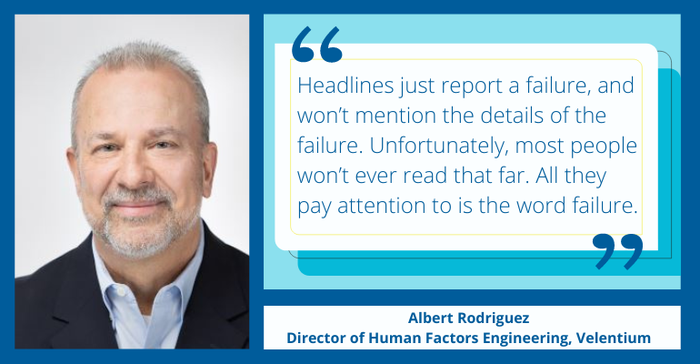The Little FDA Guidance That Could
Trivia Tuesday: In 2013, FDA saw "extraordinary" interest in what slow-moving medical device design and engineering guidance?
August 8, 2023

The wheels of medical device regulation turn slowly at times. But just like The Little Engine That Could, it usually reaches its destination eventually. One of the slowest moving regulations was FDA's original draft guidance on Applying Human Factors and Usability Engineering to Optimize Medical Device Design.
The importance of human factors and usability engineering gained recognition at least two decades before the draft guidance was issued in June 2011. And yet, it took FDA nearly five years to publish the final guidance. That's due, in part, to the "extraordinary" amount of interest the agency received in the form of public comments.
QuynhNhu Nguyen, a human factors specialist with more than 15 years of FDA regulatory science and evaluation experience with human factors and more, addressed the unprecedented interest in the draft guidance at an industry conference in May 2013.
"She also mentioned that FDA staff is working to get the guidance out as soon as possible," Jim Dickinson, a former MD+DI contributor, reported at the time. "In FDA parlance, especially in these post-sequestration times, this means nobody has any idea when it will see light of day as a final document."
The final guidance document on Applying Human Factors and Usability Engineering to Optimize Medical Device Design did eventually see the light of day – almost three years later.
Since the guidance was finalized in February 2016, FDA has required medical device manufacturers to apply human factors and usability engineering to a subset of device types that pose the highest usability-related risks, such as software-controlled devices, some hospital devices, and home use devices. According to FDA Law Blog, this means only a subset of 510(k) submissions have historically included HF validation data.
That's on the cusp of changing.
FDA issued a draft guidance, Content of Human Factors Information in Medical Device Marketing Submissions, in December 2022. The document is intended to compliment the earlier guidance, with a focus on the type of human factors data manufacturers should include in a submission to FDA.
"In one way, this is good news," writes Jeffrey K. Shapiro for FDA Law Blog, explaining that the generation of human factors data is a detailed and burdensome process, but not as much so as a full-blown clinical trial. He also noted that human factors data reviews tend to generate a "good percentage" of additional information requests in 510(k) reviews, many of which arise because the manufacturer is unfamiliar with the "peculiarities in vocabulary and requirements" of FDA's human factors review staff.
Shapiro specializes in medical device law, advising and representing companies before FDA for more than 25 years.
As additional information requests can be nerve-racking for manufacturers to manage, Shapiro opines that the medical device industry would welcome guidance intended to smooth the human factors aspects of 510(k) reviews.
"But there is a very big fly in this ointment," he writes.
Industry won't be happy to hear, however, that the current draft guidance significantly expands the number of 510(k) submissions that require human factors data, as it would apply to any new or modified medical device that contains so much as a single "critical task." That means any user task which, if performed incorrectly or not at all, could potentially cause serious harm to the patient or users.
"To put it another way, according to the draft guidance, the only valid justification for not including human factors data for a new device is that there are no critical tasks," Shapiro writes. "... It will dramatically increase the burden and uncertainty associated with every submission across many device types."
And this is regardless of whether human factors validation testing was required for the predicate device.
Shapiro's argument is that the draft guidance is at odds with the fundamental purposes of FDA's 510(k) program in that it lessens the efficiency of the review process for low to moderate risk devices.
But let's play devil's advocate and look at the issue from FDA's perspective. A growing number of medical device adverse event reports are linked to user errors, so it makes sense from a patient and user safety perspective to take a closer look at human factors and usability engineering of every medical device submission. This is especially true when you think about the growing trend of at-home medical devices and the shift toward more consumer-friendly medical devices.
Why human factors and usability engineering is so important in medical devices

MD+DI Managing Editor Katie Hobbins recently spoke with Albert Rodriguez, director of human factors engineering at Velentium, about why human factors and usability engineering is so important.
"For a product to work properly and be considered successful in this industry, it must be able to satisfy its intended end user needs while being used in the environment that it would typically be used," Rodriguez said. "...Engineers are often not aware of the details about those two aspects of the products they are designing. Frequently, clients view the process of identifying this information as costly and unnecessary because the required research effort associated with the human factors engineering processes does not produce the output typically associated with product development."
That said, Rodriguez explains that without adding in fully integrated human factors engineering processes, the product development team is essentially flying blind. Without knowing the specifics of how the design should support the intended user, the product is more likely to fail at some point in the life cycle – whether it be in clinical trials, research studies, or commercial release.
"The failure may not be because the product didn’t correctly perform its intended functions, but because there was a usability issue or user error that caused it to fail," Rodriguez said. "Despite that, headlines just report a failure, and won’t mention the details of the failure. Unfortunately, most people won’t ever read that far. All they pay attention to is the word failure."
Read the rest of this interview on human factors and usability engineering here.
About the Author(s)
You May Also Like



.png?width=300&auto=webp&quality=80&disable=upscale)
